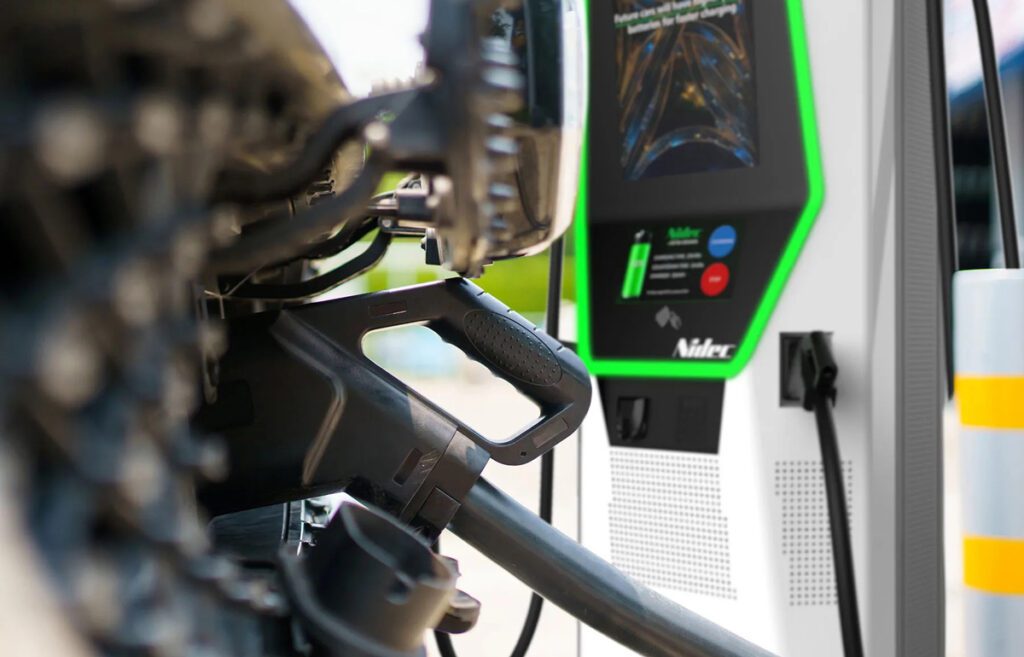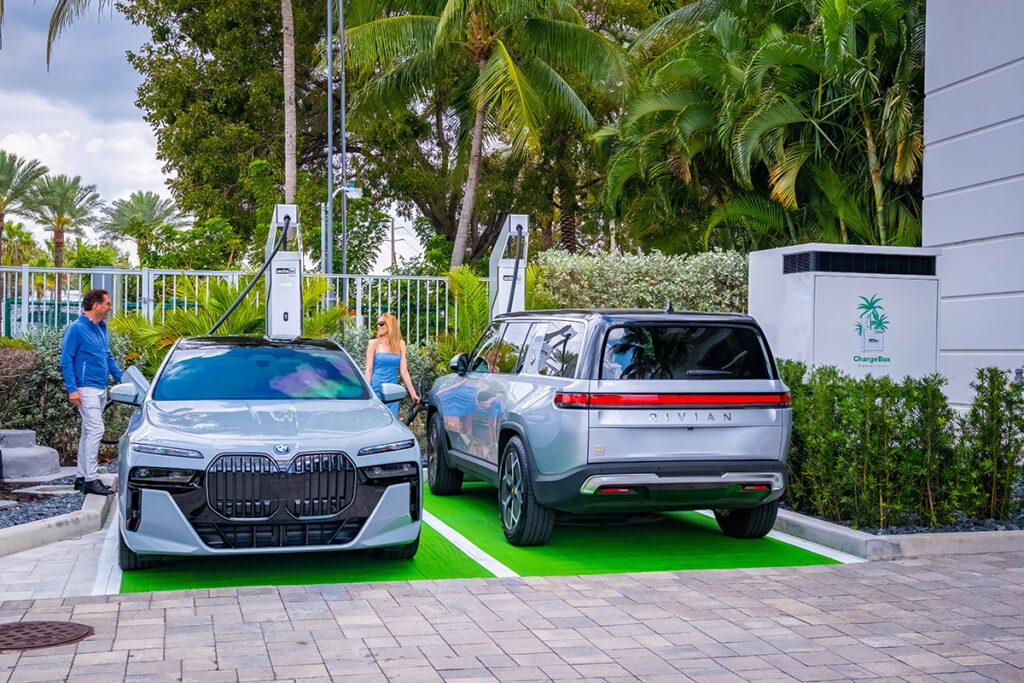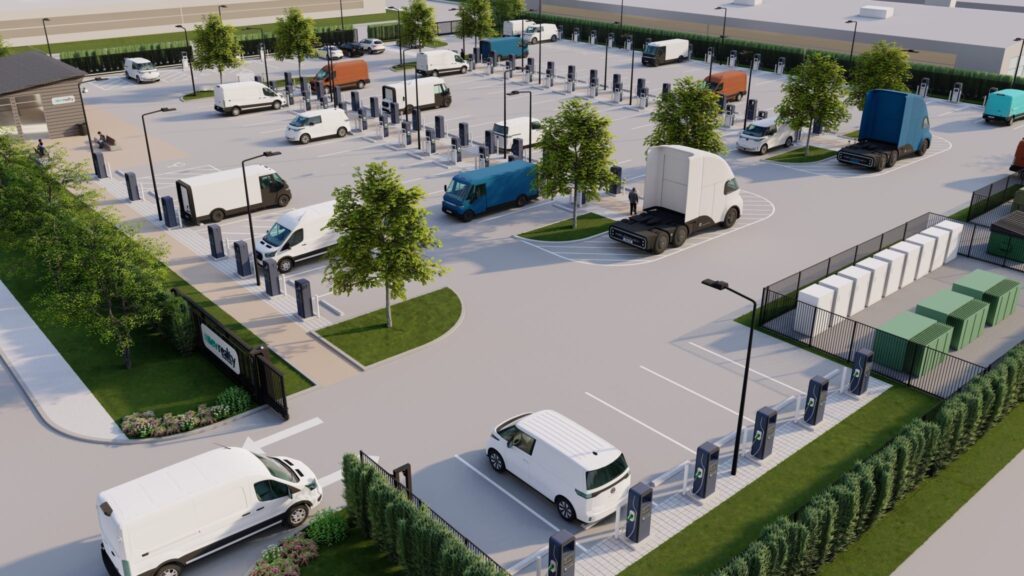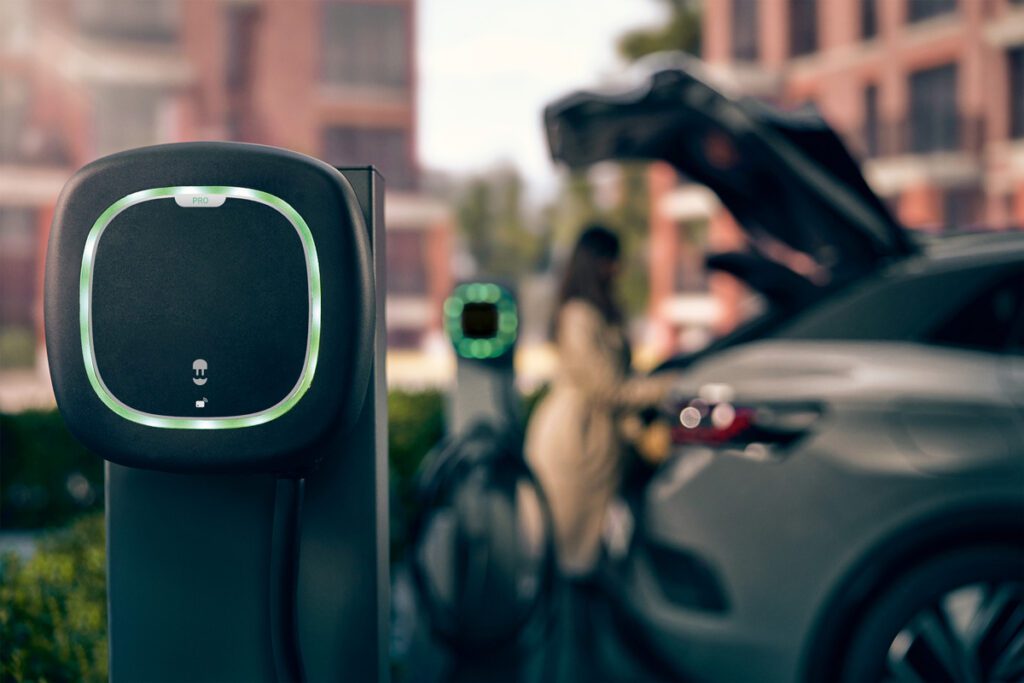“This is the first truly new consumer device to be introduced in almost twenty years,” says Forest Williams, Director of Business and Channel Development at PowerFlex Systems. “Certainly this product will have the biggest impact on electrical systems and the grid since the advent of television in the 1950s.”
Williams is referring, of course, to EVs. The rising popularity of plug-ins is exposing some less obvious but often ignored questions. How do you charge all of these new loads efficiently? What happens when hundreds of vehicles in a parking facility are plugged in at the same time? What happens when every parking lot has that many EVs?
PowerFlex Systems is taking a unique approach to answering these questions with a technology that they’re calling Adaptive Load Management.
The charging problem – it’s a matter of timing
The nature of the problem is easy to illustrate. Imagine a parking lot equipped with multiple EV chargers, and three different drivers who use the chargers at different times of the day (figure 1). Driver 1 arrives at 7:00 am and plugs in his EV. Two hours later, at 9:00 am, Driver 2 pulls up and plugs in her EV. An hour later, Driver 3 arrives. The three drivers leave at 6:00 pm, 11:00 am, and 5:00 pm, respectively.


For each EV, the chargers will automatically provide the maximum charging power for the entire time they’re plugged in. Although this may be good for the driver, it places a heavy burden on the electrical system (and the wallet of the property owner). Add several more EVs to the mix throughout the day, with drivers coming and going on different schedules, and you end up with peaks and valleys of system usage that reflect a very inefficient waste of system capacity.
One solution to this inefficiency is a technique called load balancing, by which all the chargers are placed on a circuit and limited to a certain amount of current output. Let’s return to the example scenario to illustrate how load balancing works (figure 2). From 7:00 to 9:00 am, when EV 1 is the only car charging, it gets 100% of the available current. As soon as EV 2 arrives, the two vehicles each get half of the available current. From 10:00 to 11:00 am, when all three EVs are charging, each one gets a third of the available current.


“Now, this solution will absolutely help keep the business owner or the property manager out of peak demand charge territory, but drivers aren’t going to be very happy,” says Williams. “What if I’ve got to leave early to take my kid to soccer practice?” PowerFlex says the problem is that load balancing makes no provision for drivers who require more energy or an earlier departure time. They are completely dependent on how many other EVs are also charging. With no way to specify their usage requirements or departure times, drivers can only cross their fingers and hope for the best.
Adaptive Load Management
PowerFlex believes a better solution is required to keep both drivers and property managers happy. The company’s Adaptive Load Management technology achieves this by incorporating driver inputs and real-time electrical load monitoring to determine who gets how much energy and when.


“Drivers need to answer four questions: What charger are you at, which vehicle do you have, how many miles do you need, and when are you going to leave?” explains Williams. “We use this information to create a charging profile that is sent to our local load management controller (LMC) that has everybody else’s profile.”


By probing the unique needs of each driver, the LMC can determine the most effective way of distributing power at any given time. To continue with our example (figure 3) when Driver 1 arrives at 7:00 am, he inputs his requirements (via a mobile app), telling the system he’ll leave around 6:00 pm. When Driver 2 arrives at 9:00 am, she tells the system she’ll be leaving in two hours, and when Driver 3 arrives at 10:00 am, he specifies he’ll leave at 5:00. Knowing that EV 1 and EV 3 have all day to charge, the load management controller can give EV 2 all the available power from 9:00 to 11:00, so that Driver 2 fulfills her charge requirements in the short time she’s there. Accounting for the needs of all drivers, the system can figure out who needs what by when, and distribute available energy accordingly.
In addition to keeping track of every charging session, the load management controller also monitors the major electrical system loads, like lighting and air conditioning, as well as any additional energy supplies like solar or storage batteries. “Most electrical systems can supply substantial amounts of additional energy to the chargers because many of the sub-systems are either off or running below maximum capacity. Adaptive Load Management allows us to make use of this additional capacity.” The LMC updates these variables every 5 seconds to account for changing circumstances, ensuring it’s constantly outputting the optimal distribution of power. “Nobody’s power limits are exceeded, everybody’s getting the charge they want, and you probably just saved forty to sixty percent on the cost of the infrastructure and peak demand charges,” says Williams.


The system uses a low-power, low-latency wireless mesh network to connect the chargers and the load management controller. According to Williams, this approach offers several advantages over traditional Wi-Fi, as it has lighter data packets and a more appropriate network topology. “A mesh network makes more sense in this type of application,” explains Williams. “It makes placement of the LMC less critical, and one controller can theoretically run about 100 chargers. You could have an LMC in the wiring closet of a four-story parking garage, and as long as one of the chargers can see a charger on the next floor it repeats all the messages throughout the whole network.”
Welcome to the real world
PowerFlex has done extensive testing to validate the performance of the Adaptive Load Management algorithms. “We’ve gotten to know the facilities directors at several large Silicon Valley tech firms, and last year one of them gave us the raw energy usage data for 71 of their chargers,” says Williams. “We applied our ALM algorithms, and you can see the results. It just shaved all those peaks out, moved them out to later in the day, and would have saved them 44% less power.”
But it’s not all theoretical – PowerFlex Systems has rolled out several actual Adaptive Charging Network systems. One is located at the California Garage at Caltech in Pasadena where the basic algorithms were developed. The company installed 54 Level 2 EVSE, 20 Level 1 outlets and a DC Fast Charger in early 2016 to act as a test bed for various system components and firmware. “The California Garage is one of the largest deployments of EV chargers in a single place on the West Coast besides Google and a couple other firms in Silicon Valley,” says Williams. To get a better feel for how the system works, you can check out a very detailed online dashboard for the California Garage (caltech.powerflexsystems.com) that represents what a system owner or administrator would see.


PowerFlex has installed pilot systems at several locations in California, including the Jet Propulsion Laboratory in Pasadena, a Hilton Garden Inn, a luxury apartment building across the street from Facebook and several campuses in the Mountain View Los Altos School District. “This isn’t just what we’d like to do when we grow up,” jokes Williams. “These are real installations, and we’re in the process of setting up a distribution channel.”


The problem of how to manage the electrical loads of EVs will only become more pronounced as EVs and PHEVs become more widespread. Solving this problem is a necessity, and as far as Williams sees it, Adaptive Load Management is the best option available. “Frankly, it’s the only technology I am aware of that meets the needs of drivers, property owners and the utilities. Anything less will only disappoint one of these three groups and retard the development of a viable and economically sustainable EV charging infrastructure.”
This article originally appeared in Charged Issue 33 – September/October 2017 – Subscribe now.








































































